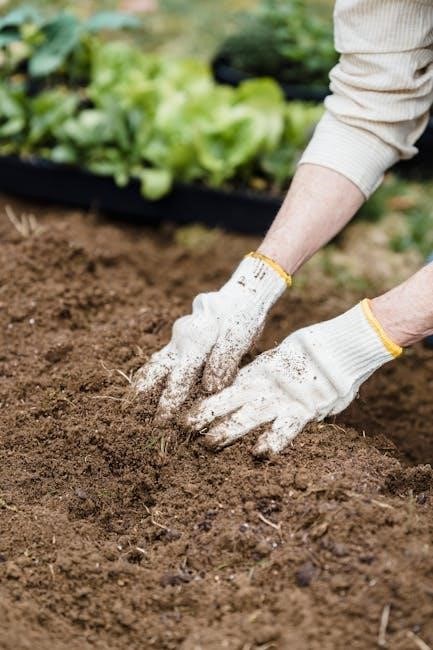
se qld vegetable planting guide
Welcome to the SE QLD Vegetable Planting Guide‚ your essential resource for gardening success in Southeast Queensland’s subtropical climate. This guide provides monthly planting tips‚ seasonal advice‚ and strategies to overcome challenges like the QLD fruit fly and extreme weather conditions‚ ensuring a thriving vegetable garden year-round.
Overview of the Growing Conditions in SE QLD
Southeast Queensland offers a subtropical climate with warm temperatures and distinct wet and dry seasons. The region experiences mild winters and hot‚ humid summers‚ with rainfall varying significantly between seasons. Microclimates‚ such as coastal vs. inland areas‚ influence growing conditions. Understanding these patterns is key to successfully planting vegetables‚ as the climate supports a wide variety of crops year-round.
Importance of Seasonal Planting in Subtropical Climates
Seasonal planting is crucial in SE QLD’s subtropical climate to maximize vegetable growth and minimize pest and disease risks. Aligning plantings with cooler‚ drier months reduces humidity-related issues‚ while warmer months support heat-tolerant crops. This approach ensures optimal soil conditions‚ pest management‚ and water efficiency‚ leading to healthier plants and higher yields throughout the year.
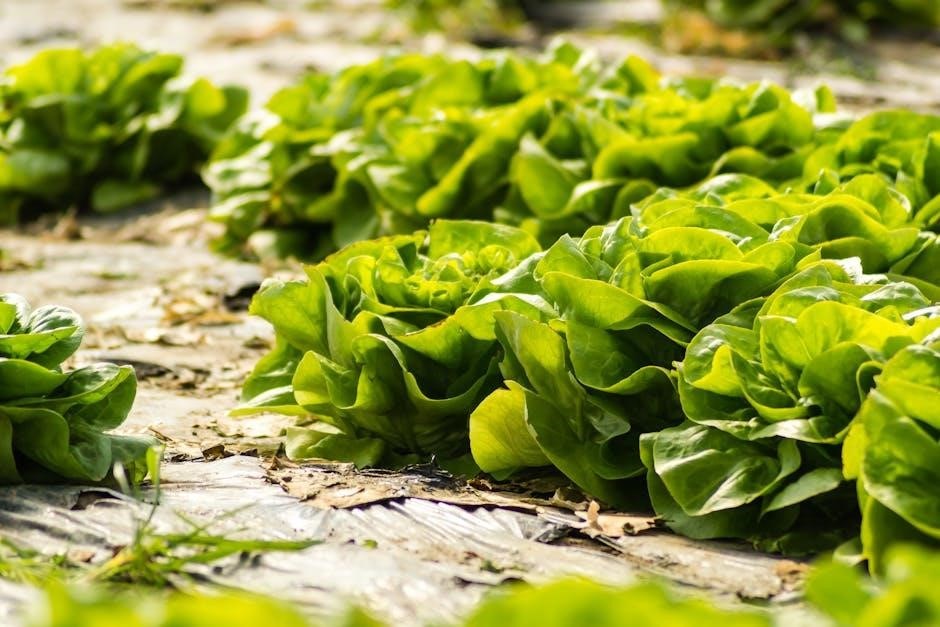
Climate and Growing Conditions in SE QLD
Southeast Queensland’s subtropical climate offers warm temperatures year-round‚ with high humidity and distinct wet and dry seasons‚ creating unique conditions for vegetable gardening and planting strategies.
Understanding Temperature and Rainfall Patterns
Southeast Queensland experiences a subtropical climate with warm temperatures year-round. Rainfall is seasonal‚ with the wet season from November to April and the dry season from May to October. Temperature variability and rainfall patterns significantly influence planting schedules‚ soil health‚ and pest activity‚ making it essential to align vegetable gardening with these cycles for optimal growth and yield.
The Role of Microclimates in Vegetable Gardening
Microclimates in SE QLD significantly impact vegetable gardening by creating localized temperature and moisture variations. Shaded areas‚ slopes‚ and windbreaks can protect plants from extreme heat or frost. Understanding these microclimates allows gardeners to optimize plant placement‚ ensuring crops thrive in conditions tailored to their needs‚ even within a subtropical climate’s broader weather patterns.
Monthly Vegetable Planting Guide for SE QLD
This guide provides tailored advice for planting vegetables in SE QLD’s subtropical climate‚ highlighting key planting times‚ weather considerations‚ and variety-specific tips for year-round success.
March and April: Key Planting Months
March and April are crucial for planting vegetables in SE QLD. Tomatoes‚ capsicums‚ eggplants‚ and leafy greens like lettuce thrive during these months; Plant beans‚ cucumbers‚ and root vegetables such as radish and beetroot. Remember to plant at dusk and harvest at dawn for optimal results. These months offer ideal weather for a bountiful harvest‚ adapting to local conditions for best outcomes.
May and June: Transitioning to Cooler Months
May and June mark the transition to cooler months in SE QLD‚ ideal for planting spinach‚ green beans‚ peas‚ and herbs like coriander‚ parsley‚ and thyme. These vegetables thrive in milder weather‚ reducing pest risks. Prepare soil with organic matter to enhance fertility. Mulching retains moisture and suppresses weeds‚ supporting healthy growth during this period.
July and August: Winter Vegetables
July and August are ideal for planting winter vegetables in SE QLD. Spinach‚ kale‚ broccoli‚ carrots‚ beetroots‚ and radishes thrive in the cooler‚ drier conditions. These vegetables prefer the mild temperatures and reduced humidity‚ making them less susceptible to pests. Mulching is beneficial to retain soil moisture and suppress weeds‚ ensuring a healthy harvest. These crops typically mature within 8-12 weeks‚ perfect for winter gardens in the region.
September and October: Spring Planting
September and October mark the start of spring in SE QLD‚ ideal for planting warm-season crops. Tomatoes‚ capsicums‚ eggplants‚ and zucchinis thrive during this period. Leafy greens like spinach and lettuce also grow well as the weather transitions. Ensure soil is well-prepared with compost or manure‚ and mulch to retain moisture. These months set the foundation for a productive spring garden.
November and December: Summer Vegetables
November and December are ideal for planting heat-tolerant crops in SE QLD. Cucumbers‚ zucchinis‚ and pumpkins thrive in the warm weather. Tomatoes and capsicums can also be planted‚ but choose heat-tolerant varieties. Mulch heavily to retain soil moisture and protect plants from extreme heat. Regular watering and monitoring for pests like fruit flies are essential for a successful summer harvest.
January and February: Heat-Tolerant Crops
January and February are perfect for planting heat-tolerant crops in SE QLD. Tomatoes‚ capsicums‚ and eggplants thrive in the summer heat. Cucumbers‚ zucchinis‚ and herbs like coriander and parsley also grow well. Ensure consistent watering and mulch to retain moisture. Monitor for pests like fruit flies and practice crop rotation to maintain soil health and maximize yields during these warm months.
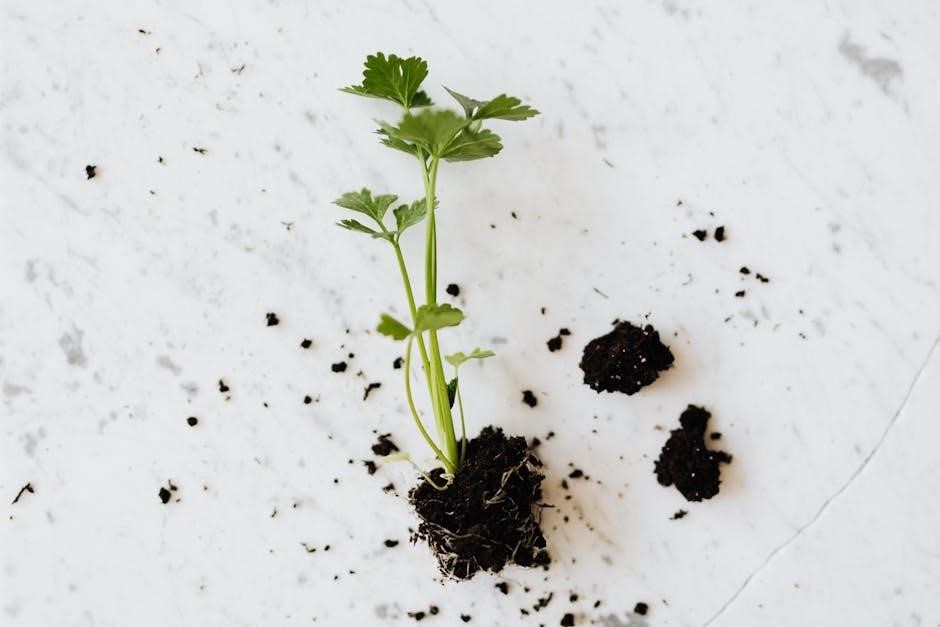
Seasonal Planting Recommendations
Seasonal planting in SE QLD requires adapting to wet and dry periods. Choose varieties suited to each season and optimize growing conditions for a continuous harvest.
Wet Season Planting Tips
Disease-resistant varieties thrive in SE QLD’s wet season. Ensure good drainage to prevent waterlogged soil and root rot. Use mulch to retain moisture and suppress weeds. Monitor for pests like the QLD fruit fly and fungal diseases‚ treating promptly. Plant crops like spinach‚ lettuce‚ and herbs that tolerate humidity and excess rain‚ ensuring a productive harvest during this period.
Dry Season Planting Strategies
In SE QLD’s dry season‚ focus on planting heat-tolerant vegetables like tomatoes‚ capsicums‚ and eggplants. Mulch heavily to retain soil moisture and reduce evaporation. Water deeply but less frequently to encourage deep root growth. Use shade cloth for young plants to protect from intense sun. Prioritize soil health by adding organic matter to improve water retention and fertility‚ ensuring a resilient garden during dry conditions.
Common Vegetables and Herbs for SE QLD Gardens
Popular vegetables include tomatoes‚ capsicums‚ and leafy greens‚ while herbs like coriander‚ parsley‚ and thyme thrive in SE QLD’s subtropical climate‚ making them ideal for year-round gardens.
Leafy Greens and Their Planting Times
Leafy greens like spinach‚ kale‚ and lettuce thrive in SE QLD’s subtropical climate. Plant spinach and kale in March and April‚ or September and October‚ when temperatures are cooler. Lettuce and other greens prefer partial shade during warmer months. Sow seeds every few weeks for a continuous harvest‚ ensuring fresh greens year-round in your garden.
Root Vegetables: Best Varieties for SE QLD
Root vegetables like carrots‚ radishes‚ and beetroots excel in SE QLD’s subtropical climate. Plant carrots and radishes in March‚ April‚ September‚ or October for optimal growth. Sweet potatoes and ginger thrive in warmer months‚ while beetroot prefers cooler conditions. Ensure well-draining soil and consistent moisture for a bountiful harvest of these versatile and nutritious root crops.
Fruit Vegetables: Tomatoes‚ Capsicums‚ and Eggplants
Tomatoes‚ capsicums‚ and eggplants thrive in SE QLD’s subtropical climate‚ making them ideal for home gardens. Plant tomatoes in September or October for a summer harvest‚ while capsicums and eggplants prefer warmer months like November and December. Choose disease-resistant varieties and ensure full sun and well-draining soil for optimal growth. Regular watering and staking will maximize yields of these flavorful fruit vegetables.
Herbs: Coriander‚ Parsley‚ and Thyme
Coriander‚ parsley‚ and thyme are popular herbs that grow well in SE QLD’s climate. Plant coriander and parsley in cooler months like March or April‚ while thyme thrives year-round. These herbs prefer well-draining soil and partial shade. Regular watering and mulching help retain moisture. They add fresh flavor to dishes and attract pollinators‚ making them a great addition to any subtropical garden.
Pest and Disease Management
Effective pest and disease management is crucial for a thriving vegetable garden in SE QLD. Common challenges include QLD fruit fly and fungal diseases‚ requiring proactive prevention and organic control methods to protect crops and maintain soil health throughout the growing season.
QLD Fruit Fly: Prevention and Control
To manage QLD fruit flies effectively‚ start with early detection using traps and monitor their presence regularly. Cover vulnerable plants like tomatoes and capsicums with fine mesh to prevent infestation. Maintain garden cleanliness by removing fallen produce and debris‚ which attracts fruit flies. Promote plant health to enhance resistance. Consider organic controls such as introducing beneficial insects or using bait traps with natural attractants like yeast. For severe infestations‚ targeted insecticides may be necessary. Explore companion planting with pest-repelling herbs like basil and mint. Understanding the fruit fly’s life cycle can help target control efforts effectively. Stay informed and seek local gardening advice for tailored strategies. A comprehensive approach combining these methods will help protect your vegetable garden from QLD fruit fly damage.
Common Diseases in Subtropical Gardens
Subtropical gardens in SE QLD often face challenges from diseases like powdery mildew‚ root rot‚ and leaf spot‚ which thrive in humid conditions. Regularly inspect plants‚ ensure good air circulation‚ and avoid overwatering to prevent outbreaks. Use organic fungicides or neem oil as a preventive measure. Crop rotation and removing infected plant material can also help mitigate the spread of disease. Maintain healthy soil to promote robust plant growth.
Organic Pest Control Methods
Organic pest control methods are essential for maintaining healthy gardens in SE QLD. Use neem oil‚ garlic sprays‚ and soap solutions to deter pests like aphids and whiteflies. Introduce beneficial insects such as ladybugs and lacewings to naturally control infestations. Physical barriers and traps can also manage pests like fruit flies. Promote plant health through proper nutrition and watering to reduce susceptibility to pests and diseases.
Soil Preparation and Care
Soil preparation is vital for a thriving vegetable garden in SE QLD. Test and adjust soil pH‚ and enrich it with compost or manure for fertility. Mulching retains moisture and suppresses weeds‚ while proper drainage ensures healthy root growth‚ fostering robust plant development throughout the seasons.
Testing and Adjusting Soil pH
Testing soil pH is crucial for optimal vegetable growth in SE QLD. Most vegetables thrive in a slightly acidic to neutral soil pH (6.0–7.0). Use a soil testing kit or send samples to a lab for analysis. To lower pH‚ add elemental sulfur or peat moss; to raise it‚ incorporate lime or dolomite. Regular monitoring ensures balanced soil conditions for healthy plant development.
Adding Organic Matter for Fertile Soil
Adding organic matter is essential for fertile soil in SE QLD. Incorporate compost‚ well-rotted manure‚ or green manure to improve soil structure and nutrient content. These amendments enhance water retention and promote beneficial microbes‚ fostering healthy plant growth. Regularly adding organic matter ensures a sustainable and productive garden‚ tailored to the region’s subtropical conditions.
Mulching: Retaining Moisture and Suppressing Weeds
Mulching is a key practice for SE QLD gardens‚ retaining moisture and suppressing weeds. Use organic mulch like straw‚ bark chips‚ or grass clippings to regulate soil temperature and reduce evaporation. Apply a 5-10 cm layer around plants‚ keeping it clear of stems to avoid rot. This method enhances soil health and supports vigorous plant growth throughout the season.
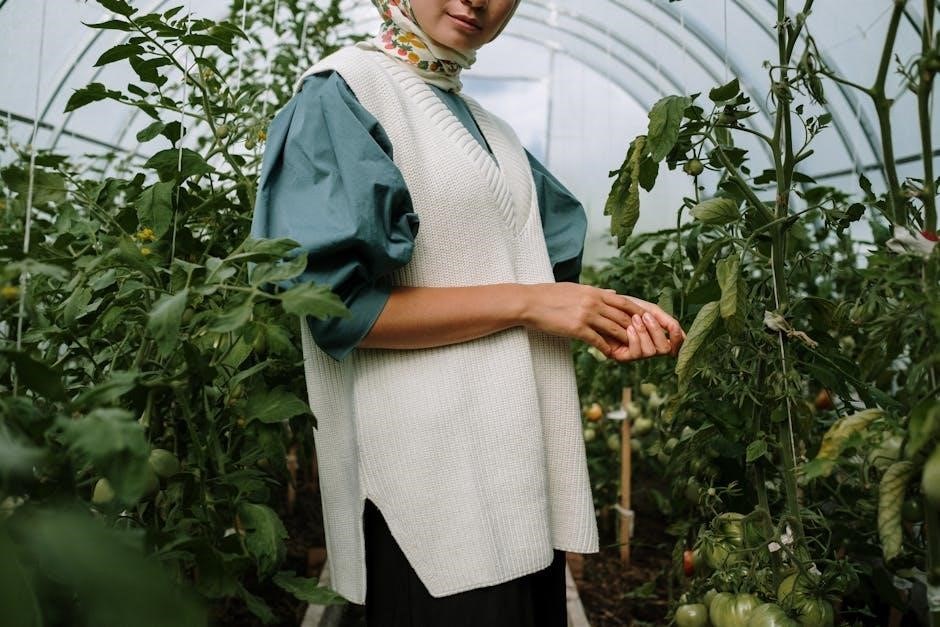
Year-Round Vegetable Planting Calendar
This calendar offers a 12-month planting schedule‚ ensuring continuous harvests in SE QLD’s subtropical climate. It outlines optimal planting times for various vegetables‚ adapting to seasonal weather patterns.
Planting Guide Summary for 12 Months
This 12-month guide provides a concise overview of vegetable planting in SE QLD. January and February focus on heat-tolerant crops like tomatoes and capsicums. March and April mark the start of the subtropical growing season‚ with seeds planted indoors. May and June transition to cooler crops like spinach and beans. July and August emphasize winter vegetables‚ while September and October signal spring planting. November and December return to summer crops‚ completing the cycle.
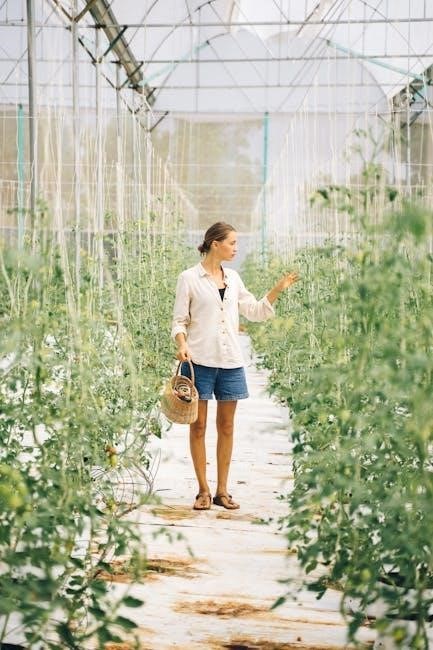
Additional Resources and Tips
Explore local gardening guides‚ expert advice‚ and online tools for tailored support. Utilize resources like the Gardening Australia Vegetable Planting Guide and regional zone planting calendars for success.
Local Gardening Guides and Expert Advice
Utilize local gardening guides and expert advice to optimize your vegetable garden in SE QLD. Resources like the Gardening Australia Vegetable Planting Guide and regional zone planting calendars provide tailored advice. Consult local nurseries‚ gardening clubs‚ and agricultural extension services for insights on soil‚ pests‚ and climate-specific strategies. These resources ensure you make informed decisions for a thriving garden.
Online Tools for Gardeners in SE QLD
Explore online tools designed for SE QLD gardeners‚ such as TheHealthyPatch.com.au‚ offering month-by-month planting guides and expert advice. Utilize weather apps and gardening forums to stay updated on climate trends and pest management. These resources provide tailored tips for subtropical conditions‚ helping you plant‚ maintain‚ and harvest successfully throughout the year.